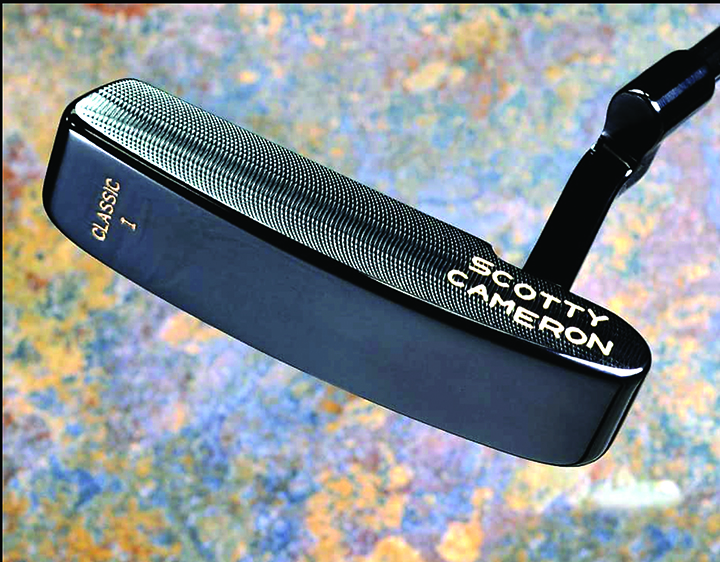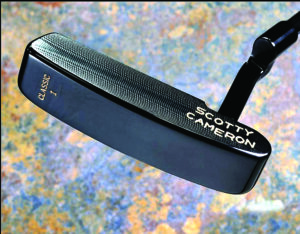

With this article, Scotty Cameron expert Bill Vogeney begins a series on the art and work of the now-famous clubmaker, including tips on collecting Cameron putters, caveats for collectors and more. Vogeney is the co-author of the 2001 book, The Art of Putters, the Scotty Cameron Story. He has been collecting golf clubs for more than 40 years and Cameron putters since 1992. A 35-year executive in financial services, Vogeney’s first collectible club was the “Designed by Arnold Palmer,” given to him by his first boss in high school. He also collects MacGregor woods and irons, along with golf course architecture and private club history books.

By Bill Vogeney
The Golf, Autumn 2023
Since he started to make putters for the PGA Tour in 1991, Scotty Cameron has become the most well-known putter maker since Karsten Solheim.
How did Scotty reach this pinnacle of success? While some might deride him by calling him “Scotty Cameraman” or attempt to discredit his success as being a function of the Acushnet/Titleist marketing dollars, I firmly believe his suc- cess is a combination of these factors:
• Scotty understands classic club design as well as anyone in the industry. His late father was a classic club afficionado, which helped him understand what visually differentiated a great golf club from an average one.
•He had some early good fortune in the golf business. After a brief stint in telephone sales with Slotline Golf in the mid-1980s, the Ray Cook company hired Scotty to do sales for the company. He quickly turned that opportunity into another one that involved representing the company on the PGA Tour. There he met players such as Nick Price and Morris Hatalsky who were fans of the Cook mallets and helped him make inroads with other players once he started his own company.
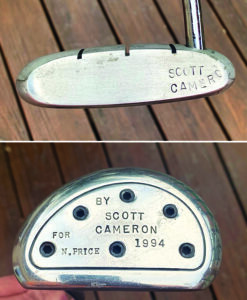
• Scotty is a good listener. From his early days listening to Hatalsky and Price, using that feedback to update some of the Ray Cook designs, Scotty has been good at taking tour feedback and enhancing existing designs, creating new versions that just look right.
• He is essentially a craftsman. Over the last decade, Scotty has done a very limited and desirable run of putters called “Craftsman.” Made one at a time, potentially just one or two a month for the most discriminating of collectors (and tour players), Scotty will take a raw head, blocky and devoid of shaping, and he’ll shape it just right. Depending on the neck and offset in mind, he’ll add a little extra curvature to the heel and toe for one neck, or just slightly soften the square look so the blade looks like it is just melting into the ground.
There is another success factor that explains some of the collector demand for his putters. I’ve been interested in classic and collectable clubs since 1978; at the time I was cooking at a public golf course restaurant (with all the free golf I could play) getting ready for my senior year of high school. One slow afternoon, my boss, the chef, and I were at the lunch counter thumbing through some recent golf magazines. There it was: an article on classic golf clubs that was my first exposure to the subject. From a Palmer “Designed By” to the MacGregor M85 Eye-o-Matic driver, I loved them all. Reading the article, I realized then (as it still is now, 45 years later) that the collector club market is influenced by what the tour players have in their bag.
The M85 driver from 45 years ago (and in fact now 70 years old), and today’s X flex, 7-degree Taylor Made driver Rory might be playing, have one thing in common for average players like me: there’s no way we’re hitting them with any measure of success. Yet classic putters can be col- lected and played with enjoyment by virtually anyone with a reasonably adequate skill level in the game. My experience in collecting Scotty’s work over the last 31 years has introduced me to such tour players as Brad Faxon who just love Scotty’s work; it’s also led me to people who struggle to break 100 who love Cameron putters just as much as I do. Scotty’s work has opened the door to a new generation of golf collectors.
Where to start if you want to collect Cameron putters? You may not realize that Scotty has a fair share of information and pictures on his website. Pictures of virtually every stock and limited-edition putter Scotty has made since 1995 can be found at www.scottycameron.com/putter-archive/
I must admit, for a guy who’s made a career as a lender, I have a bit of educator in me. I like learning, and I like teaching. That’s why I wrote The Art of Putters, The Scotty Cameron Story with fellow golf collector David Levine in 2001; I wanted to help people learn about Scotty’s work and history. In the 22 years since we published it, the content has certainly become dated. If you want to learn more about his early work, that book is probably the best place to start.
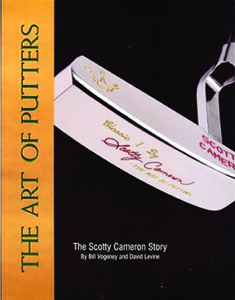
Over the years, there have been other publications that have provided pieces of Cameron history and sometimes lots of pretty pictures of Scotty’s work. I’ve listed a few of these below.
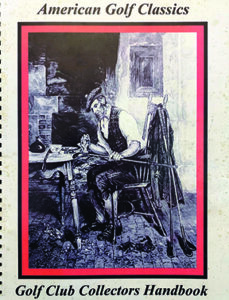
Golf Club Collectors Handbook (1996, Bob Farino)
This book covers the gamut of collectible golf clubs, from fancy-face woods, to MacGregor woods and irons, to Cameron putters. It primarily covers Scotty’s original, pre-Titleist Classic and Scottsman series, and some of his early Titleist limited edition putters made through 1996. Admittedly if you’re looking for just Cameron informa- tion, there is a lot of overlap with my book. If you’re also collecting classic clubs, this is a good one to track down.
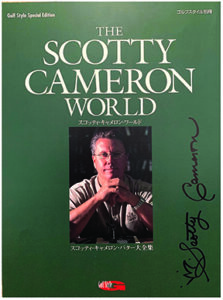
The Scotty Cameron World (2006)
Published by Golf Style magazine in Japan, the book is entirely written in Japanese. However, it does a wonderful job of providing lots of pretty putter pictures covering close to 15 years of Cameron’s work. Perhaps the most valuable portion of the book devotes many pages to pictures of putters made for various tour players – U.S. PGA and JPGA players. In my opinion, these putters present opportunities to collect clubs that provide nice value and were used by different tour players; what I’d call “real” tour putters. These tour putters have many signs of Cameron’s work to them – welded necks, hand shaping, hand stamping, etc.
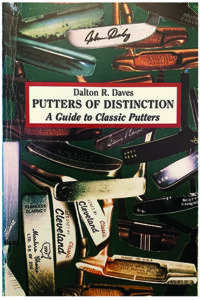
Putters of Distinction (1996, Dalton Daves)
A reference book on putters in general; the date of publishing limits what Dalton could cover compared to the entirety of Scotty’s career. All the pictures are in black and white. The highlight of the book is a handful of putters made for different tour players that show some of Scotty’s early creativity.
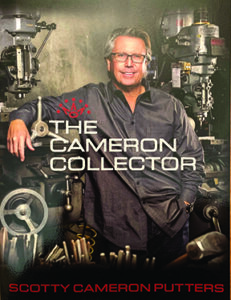
The Cameron Collector (2016)
Another book of previously published pictures distributed by Golf Style in Japan, the book does a great job of featuring a lot of Scotty’s newer custom work. Often referred to as “Garage putters” or now called “Craftsman” or “Toolbox,” these putters can often be more like works of art than perhaps functional putters, though most could be used if so desired. These have become go-to putters to collect for the ultra-wealthy enthusiast.
Want more information?
Whether you visit the Golf Heritage Society website or enjoy the Society’s quarterly publication, The Golf, I’ll be working on writing additional content for as long as GHS will have me, focused on helping you decide what aspect of Scotty’s work is most interesting to you. There’s a lot to choose from; whether it’s Scotty’s earliest tour putters that are stamped “Scott Cameron,” other tour putters with specific player initials, limited edition putters like the “My Girl” line, or some of Scotty’s earliest putters for the consumer market made in conjunction with Mizuno or Titleist, there’s truly something for everyone. Sadly, what the classic club market suffered through in the 80s and 90s with fake and misrepresented clubs, has been a problem for Cameron collectors since the late 90s as well. I hope to also cover some of the more egregious efforts at defrauding collectors.

